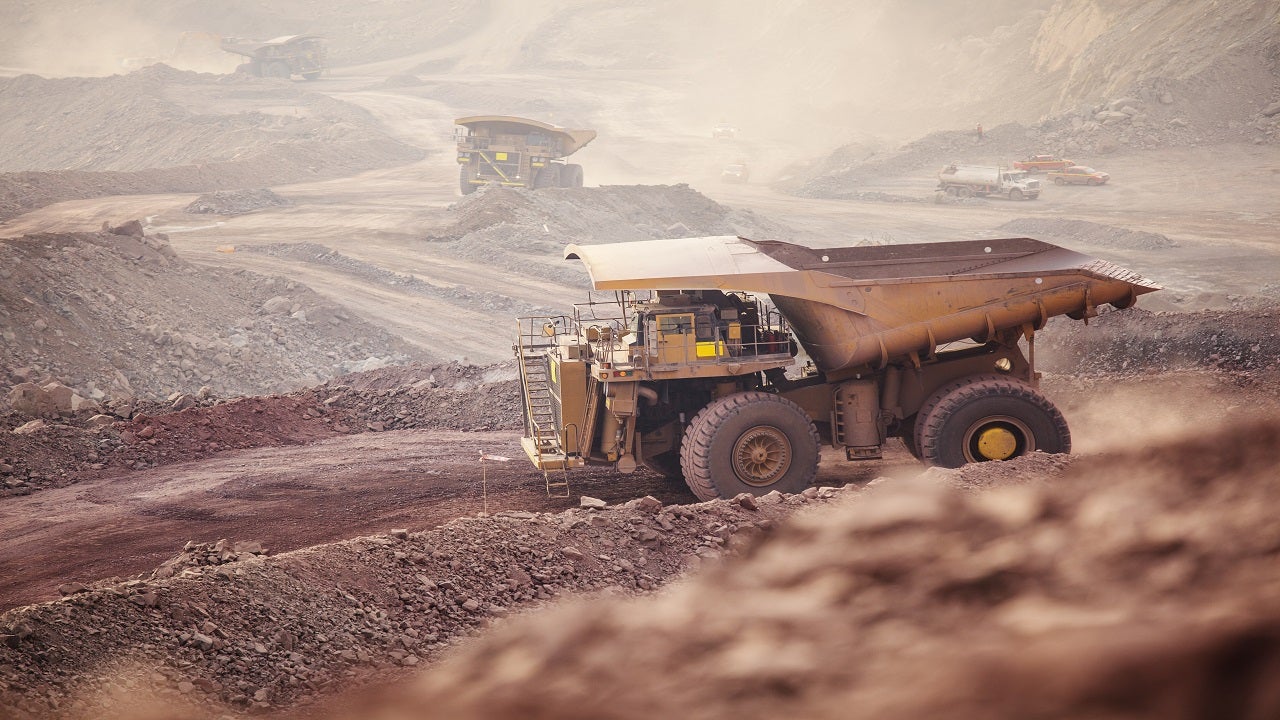The Tschudi copper project in Namibia is a low-cost open-pit mine. The mine extracts oxidised copper ore to be treated through heap leaching, solvent extraction and electrowinning. The project is owned by UK-based mining company Weatherly International.
Environmental approval for the Tschudi mine was granted in April 2013 and groundbreaking was held in November 2013. Civil construction works at the mine site began in April 2014. The first copper was produced at the mine in October 2015.
The mine is owned and operated by Ongopolo Mining Limited (OML), the main operating company of WTI and its subsidiaries. Around 730 employees are directly working on site, with more than 98% of the workers being Namibian citizens.
According to the current life of mine (LOM) plan, ore mining will continue until July 2024 and copper production will continue from the heap leach until December 2025. Around 175,000t of cathode copper is expected to be produced over the mine’s entire lifespan.
The mine currently runs at 17 kilotonnes a year (ktpa), which is the maximum design capacity of the solvent extraction/electrowinning (SX-EW) plant.
Tschudi mine location, geology, mineralisation and reserves
The Tschudi mine is located around 20km west of Tsumeb, in the Oshikoto region of Namibia. The mine was developed on an ML125 granted mining licence.
The copper deposit is within the Otavi sediments of northern Namibia, which are part of the Damara orogenic belt and mainly made up of sandstone. The Damara belt is an extension of the Lufilian orogenic belt, which hosts the Katangan and Zambian copper deposits of northern Zambia and the southern Democratic Republic of the Congo (DRC).
The mine’s ore body is located in the basal sandstones and minor conglomerates of the Malden Group. The deposit is open-ended at the south-west and has a strike length of around 2,500m.
Oxide mineralisation at the mine occurs up to 70m below the surface. Beyond the 70m depth, a transitional zone of mixed sulphide oxide mineralisation extends to a depth of around 110m, followed by a sulphide zone.
Copper mineralisation in the oxide zone is mainly composed of malachite and minor chalcocite. The mineralisation is disseminated through a sandstone and conglomerate unit lying above a dolomite unit. The sulphide zone contains chalcocite and bornite, while the transitional zone contains a combination of chalcocite and bornite.
As of December 2019, the Tschudi mine is estimated to contain ore reserves of 15.6Mt at 0.89% Cu for 138.2kt and mineral resources of 51.0Mt at 0.76% Cu for 387.7kt.
Mining and processing of ore at the Tschudi mine
The Tschudi mining project uses the conventional drill and blast method of mining followed by loading and trucking. The copper-bearing ore is extracted at a rate ranging from 2Mtpa to 2.6Mtpa.
The initial mining plan involves developing a small pit in the eastern section of the mine for the first two years. The pit is excavated entirely within the oxide mineralisation.
Ore is hauled from the pit and blended using the finger pile system. The run-of-mine ore passes through a three-stage crushing unit featuring a primary jaw crusher, a secondary gyratory crusher and two tertiary gyratory crushers. The crushed ore is then taken to the agglomeration plant, where sulphuric acid and raffinate are added.
Copper-bearing rock is then conveyed to the heap leach pad, which leaches the ore in two stages. In the first stage, the ore is leached using intermediate leached solution (ILS). In the second stage, the ore is leached further using raffinate.
Copper is extracted from the leached solution through electrowinning and solvent extraction methods. The copper is bundled and transported to the export terminal at Walvis Bay on the west coast of Namibia.
Construction and infrastructure facilities of the Tschudi mine
The Tschudi mine is accessible from Tsumeb via a 12.5km gravel road connecting the mine to the main road between Tsumeb and Oshivelo. The project has involved building temporary and permanent haul roads, buildings and other related infrastructure facilities.
Power is provided by an on-site 66kV substation, which was upgraded to 8MVA by Namibia’s national power utility company, Nampower. Processing water is sourced from bores within the water-rich dolomites.
Financing and off-take of copper cathodes produced at Tschudi
US-based investment management firm Orion Mine Finance is funding the copper project through an $80m loan facility, in addition to an $8m overrun facility. Orion Mine Finance has purchased the entire copper cathode produced at the mine.
Contractors and consultants for the Tschudi mine
Zambia-based mining consultant Minxcon was contracted to carry out an independent economic assessment for the Tschudi mining project’s bankable feasibility study (BFS), and to update the financial model of the project. South African mining company Coffey Mining was contracted to produce a mine schedule for the deposit.
Canada-based mining consultant Knight Piésold carried out a bankable feasibility study on heap leach, involving geotechnical examination and lab testing of both construction material and leached ore. This was followed by comprehensive design and construction supervision of the leap leach pad, drainage system and collection channels, pregnant leach solution (PLS), ILS, stormwater, raffinate, SX event and raw water ponds.
South Africa-based construction company Basil Read was awarded the mining contract, while South African mining company B&E International was contracted to design and build a crushing, agglomeration and stacking plant at the copper mine on a build, own and operate (BOO) basis.
The engineering, procurement and construction management (EPCM) contract for the plant construction and infrastructure facilities was awarded to South Africa-based engineering consultant LogiMan.
B&E International was awarded a contract for the project’s crushing, agglomeration and stacking plant.




